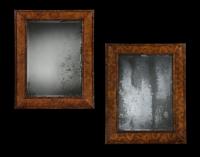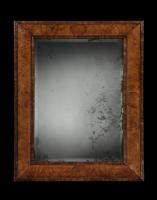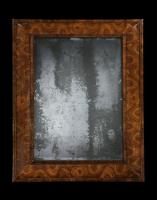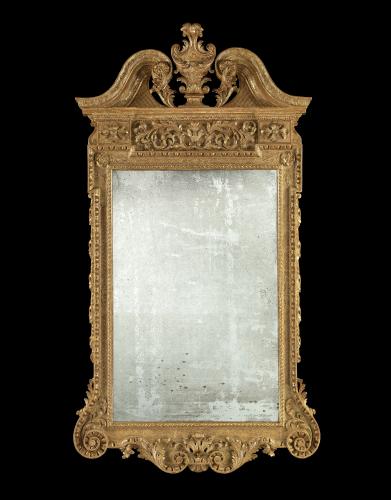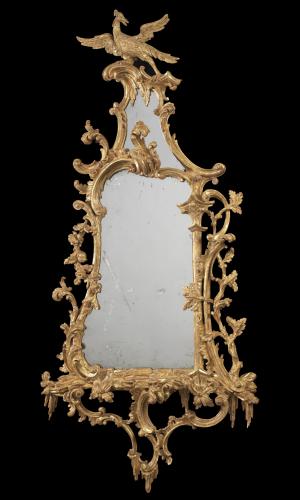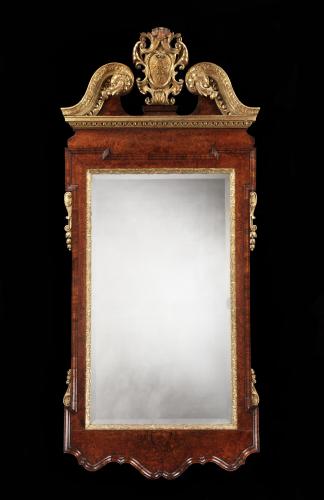
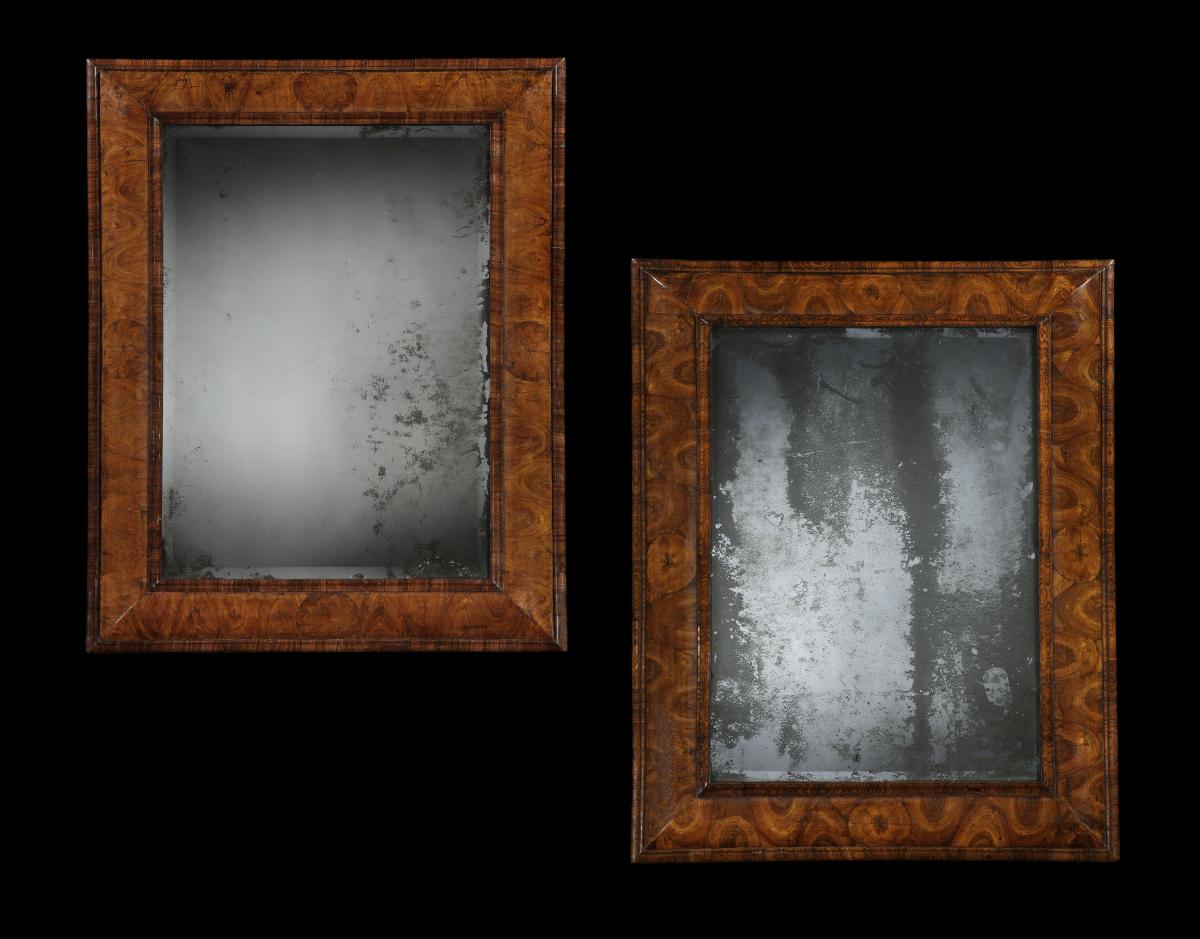
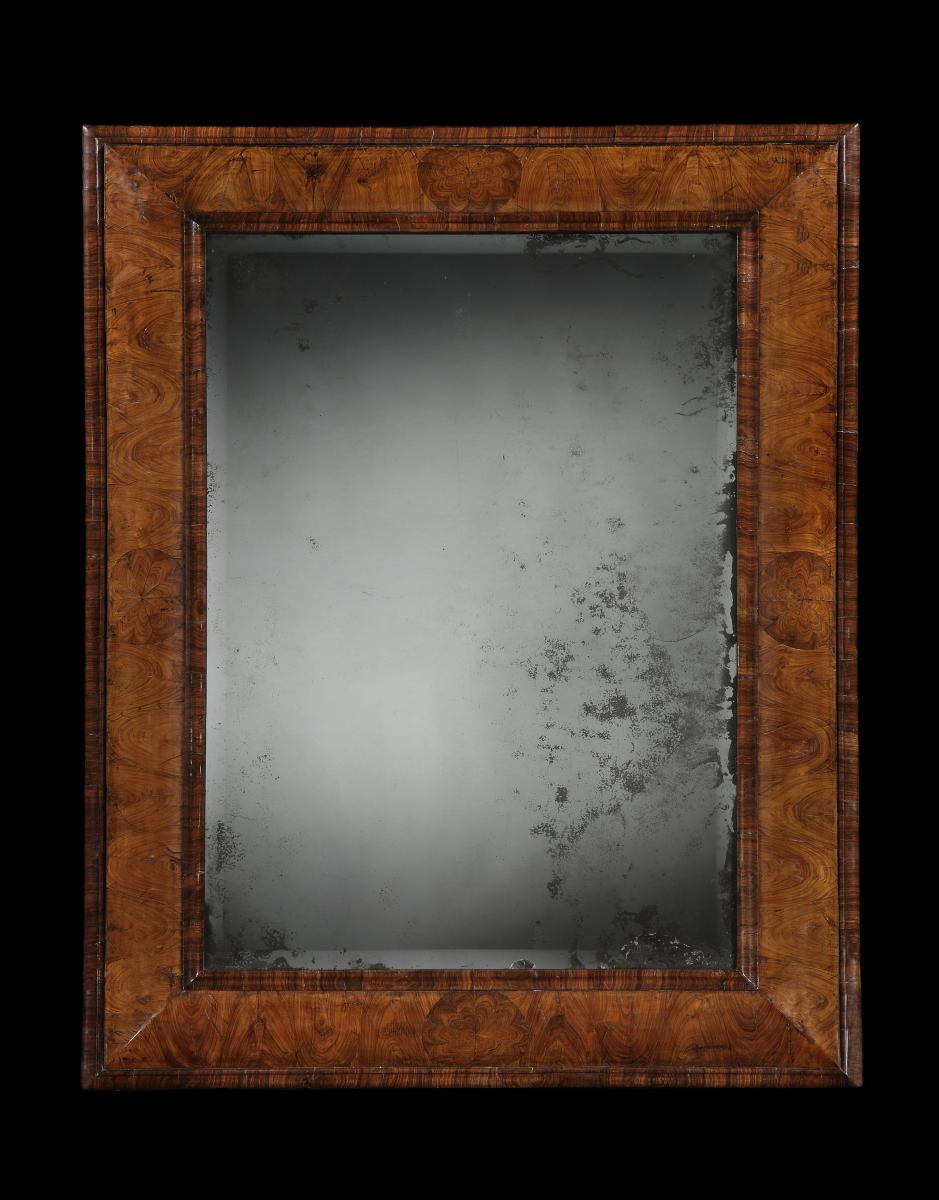
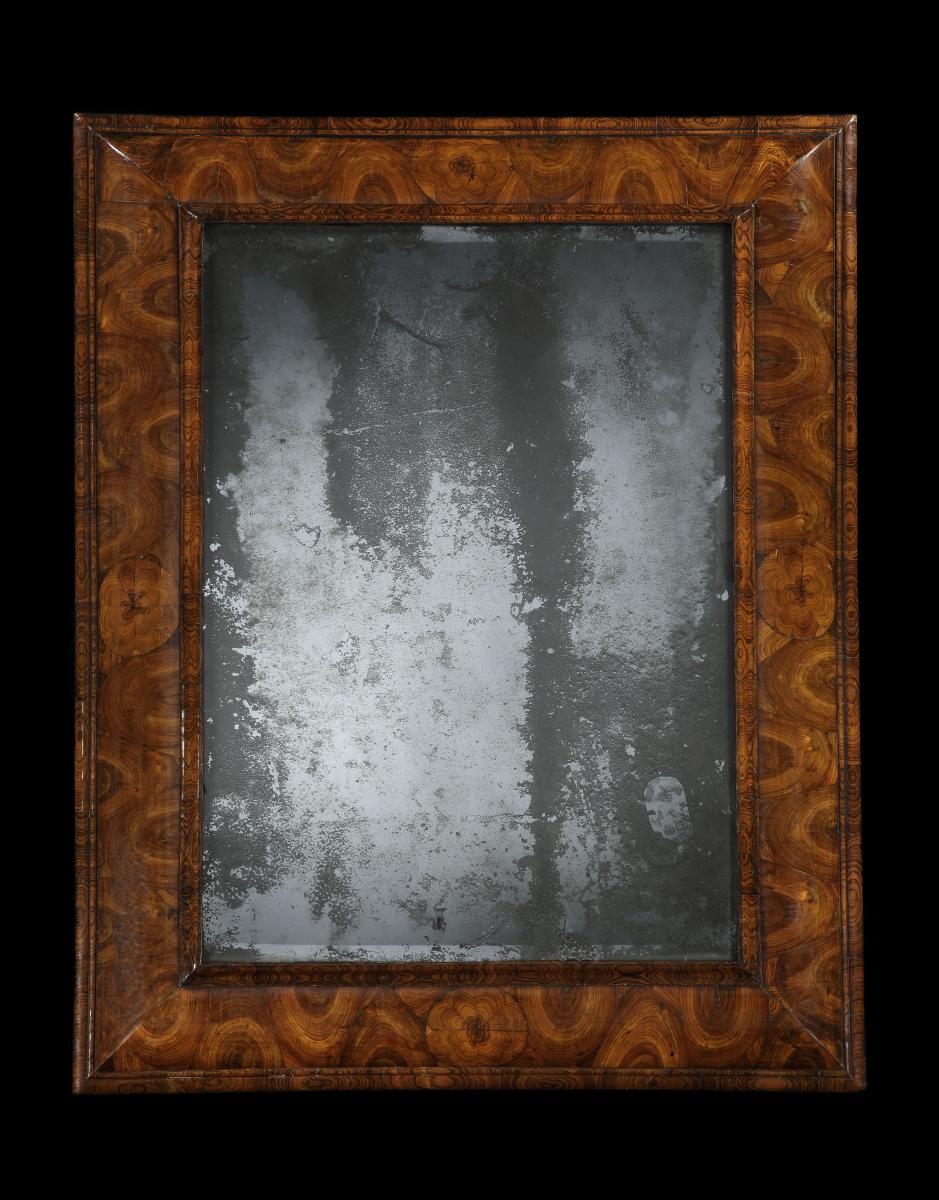
Price on application
This object is eligible for a Certificate of BADA Provenance
The BADA Standard
- Since 1918, BADA has been the leading association for the antiques and fine art trade
- Members are elected for their knowledge, integrity and quality of stock
- Our clients are protected by BADA’s code of conduct
- Our dealers’ membership is reviewed and renewed annually
- Bada.org is a non-profit site: clients deal directly with members and they pay no hidden fees
The Chirk Castle Mirrors.
England, circa 1675 - 1685.
An exceptional and highly important pair of Charles II period kingwood oyster-veneered mirrrors, probably by Thomas Pistor.
Of magnificent and extremely rare large scale, each with wonderful bevelled plates within cushion-moulded frames.
These outstanding pier-glasses, with bevelled Vauxhall plates, have bolection-moulded kingwood frames superbly parquetried in wave-scrolled figuring and central mosaic-parquetried medallions of shell-scalloped 'oyster' veneer.
More Details:
Of exceptional size for their date, these wonderful mirrors were almost certainly commissioned for the Long Gallery at Chirk Castle. Built by Sir Thomas Myddelton (d. 1684), 2nd Bt., the Long Gallery was begun in 1670 and was substantially complete in 1678, when the sum of £100 15s 0d was paid to 'Jonathan Hooke, the Joyner, in full for all the ards at Vs per yard'. On the same day, Thomas Dugdale was paid £30 'for carveing all the Carved worke at the Longe Gallery'. Both had worked at Weston Park, the ancestral home of Charlotte Bridgeman, whom Myddelton had married in 1677. Conceived as the great room of entertainment and excercise, the Long Gallery retained its sumptuous Baroque appearance and furnishings throughout the 18th century and beyond. Lady Sykes commented in 1796 that the furnishings were 'so crowded together they are seen to great disadvantage'. Furnishings included the great series of portraits in their original Sunderland frames and wonderful cabients on George I gilt gesso stands which had been acquired on the Grand Tour by Robert Myddelton (d. 1733). The first billiard table was installed in 1686.
This rare pair of mirrors are almost certainly the '2 Pier Glasses 10.0.0.' recorded in the Long Gallery in the 1795 Inventory. They were also shown in a watercolour by the Hon. Mrs. Mary Wombwell of the Long Gallery dated Sept 20th 1861 (from an album still owned by the Myddelton family), as well as an undated late 19th century photograph of the gallery which shows one of the mirrors above the fireplace at the south end. Both these documents show how much of the original arrangement survived, in spite of alterations carried out in the 1840s. An inventory carried out circa 1910 describes: '1 pier glass over fire place Rose wood frame North End; and '1 pier glass over fire place rosewood frame South End'.
Undoubtably originally supplied with a matching pair of 'pier' or dressing tables, related 'cushion frame' mirrors are discussed by Adam Bowett in English Furniture 1660 - 1714, Woodbridge, 2002, pp. 136 - 139 including a smaller example at Nunnington Hall.
It is possible that these mirrors were made by Thomas Pistor - a 'oyster-veneered princeswood' bureau with similar veneer work was illustrated in Country Life (11 August 1950. p.44) in one of a series of articles on Buxted Park, a house recently reconstructed by the architect Basil Ionides after a serious fire. The bureau was inscribed to the interioer 'Mr. Thomas Pistor, Ludgate Hill, London', (ref: C. Gilbert, The Dictionary of Marked London Furniture, Leeds, 1996, p. 44). Features include the use of exotic kingswood or princeswood veneers, the wavy decoration of the veneered work in the way that the 'oysters' have been laid, the same geometric patterns and roundels.
The relatively obscure name of the Moorfields and Ludgate Hill joiner and cabinet-maker Thomas Pistor - in fact two craftsmen, a father and son of the same name, came to light in the announcement of Mr. Pistor's (junior) stock sale in the Spectator on 22 March 1711, which was published by R.W. Symonds in 1929. Their obscurity is no small part due to the fact that neither worked for the Royal household. Ref: A.Turpin, 'Thomas Pistor, Father and Son, and Levens Hall', Furniture History, 2000, pp. 43-60. Further research has revealed a documented commission by Thomas Pistor now at Levens Hall, Cumbria - in particular a suite of furniture made for James Grahme, a friend and member of the household of James, Duke of York (later King James II 1685-1688, with bills dating from August 1684 to 1687 which include a '....Large wall(nut) flowered Looking glass & Tables and Stands flowered.....09.10.00', delviered in April 1685 (ibid. p.44, figs.1-3). Adriana Turpin states that Pistor's work was very much on a par with the Royal Cabinet-Makers, John Gumley and Gerrit Jensen.
Literature:
Illustrated in situ in the Long Gallery in a watercolour of 1861 by The Hon. Mrs. Mary Wombwell
Illustrated in a late 19th century photograph published in the National Trust Guidebook, 1983, p. 25
C. Hussey, 'Chirk Castle', Country Life, 5 October 1951, fig. 8 (illustrated)
Dimensions
Height: 51 in (129.5 cm) Width: 39 in (99 cm)Stock number
R10.182The BADA Standard
- Since 1918, BADA has been the leading association for the antiques and fine art trade
- Members are elected for their knowledge, integrity and quality of stock
- Our clients are protected by BADA’s code of conduct
- Our dealers’ membership is reviewed and renewed annually
- Bada.org is a non-profit site: clients deal directly with members and they pay no hidden fees


